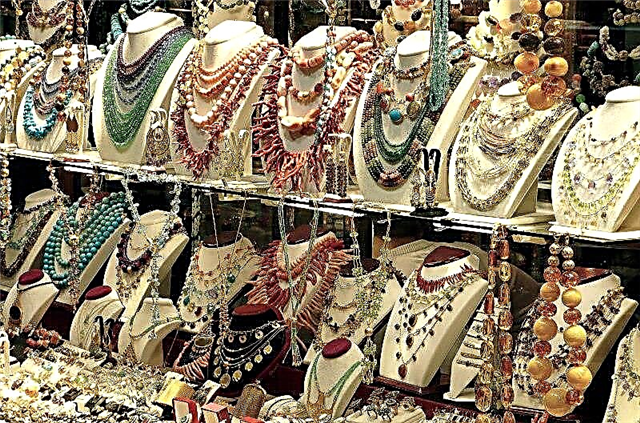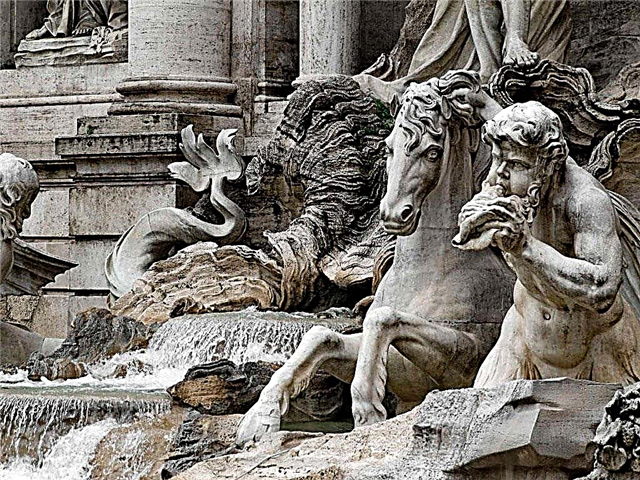When you get to Rome, you fall in love with the city immediately and forever. It fascinates and amazes: magnificent cathedrals, palazzo, monuments, art galleries - all this is beautiful and unforgettable! There are many fountains in the Italian capital - large and small, modest and striking in luxury, but the Trevi fountain is by far the most grandiose.
Construction history
The history of its creation can be attributed to the first century BC, to the time of the reign of Emperor Octavian Augustus. The emperor decided to re-plan the city because its population was growing rapidly. The problem was with water - it was not enough for the needs of the residents. According to legend, squads of legionnaires were sent to search for suitable sources of water, but their search did not bring good luck. They were already returning home when they met the girl. The girl was a local resident, she knew the surroundings well and showed the soldiers where to find the source, which later received the name Aqua Virgo - that is, the Water of the Virgin.
They carried an aqueduct from this source, it regularly served people until the 11th century, but then it was destroyed by the conquerors - the Goths. For several centuries it was in an abandoned state, then it was restored in the XIII century, it served as a source of water until the XYII century.
In the XYII century, Urban YIII was elected pontiff. He decided to build a magnificent fountain instead of a simple aqueduct. The famous master architect Giovanni Lorenzo Bernini was invited to make the project. He managed to make several sketches of the fountain, but by the beginning of construction Pope Urban YIII dies, and his successor was not interested in the reconstruction of the aqueduct.
Work resumed only under Pope Clement XII (reigned 1730-1740), he invited the architect Nicole Salve to build the fountain. Salve took the already prepared project of the architect Bernini as a basis for his work, but thoroughly supplemented it with his ideas. The fountain was under construction for 30 years, unfortunately, Salve did not wait for the end of the construction, he died without seeing his creation in all its glory.
Description

The construction turned out to be grandiose and did not at all resemble the previous one, so they decided that its name should be different. There are several versions of the origin of the name of the fountain. The building stands at the intersection of three streets, this fact prompted the idea to name it Tre Via, that is, Three streets. According to another legend, the surname of the girl who showed the source to the Roman legionnaires was Trevi. The architecture creates a single whole with the Palazzo Polli and it seems that the fountain is very large, especially the Trevi Square, where the landmark is located, is small.

The opening in a solemn atmosphere took place in 1762 under Pope Clement XII. The heraldic papal coat of arms was placed between two allegorical figures of "Glory", and the dictum "the great pontiff Clement XII" was carved on the memorial plaque. Trevi architecture is executed in baroque style. In the plot of the composition, the marine theme is the ancient gods and mythological inhabitants. In the middle there is a large chariot in the form of a sea shell, harnessed by newts and winged sea horses. On it, in all its splendor, it is as if the god Ocean is floating out. He extends his right hand forward. The Ocean Statue was made by the talented architect Pietro Bracci.

A pool with rounded sides, a ramp runs along its perimeter. The architect built two staircases along the edges, a similar technique the author used to level the relief difference: the left side of the square is higher than the opposite one. In the center of the composition there is a triumphal arch. In the niches on the left and right sides of the Ocean, there are allegorical female figures - Health and Abundance. Above them, on the right and left sides, there are bas-reliefs, one depicts an episode - a meeting of a girl with Roman legionaries, on the left - a bas-relief with Emperor Octavian Augustus, who approves the construction of an aqueduct.
The Trevi Fountain is adjacent to the Palazzo Poli and serves as a backdrop. The owner of the palace in 1678 became the Duke of Poli, from that time the palace began to be called after him. Along with the construction of the fountain, it was necessary to rebuild Poli's palace so that the architectural appearance of the buildings was fully consistent. For these works, a young architect Luigi Vavitelli, not very famous at that time, was invited.
The complete reconstruction of the palace belongs to this master. In the first quarter of the 9th century, the second floor of the building was rented by an aristocrat from Russia Volkonskaya. Now this building houses the Institute of Graphics and Design, engravings and drawings are exhibited there.
Modern look
The fountain has not been repaired over the past 125 years and it looked very dilapidated. At the beginning of the XXI century, a small cosmetic repair was made because the figures began to collapse. Then a thorough reconstruction of the building was carried out - it was closed for almost a year and a half in June 2014. The fountain is beautiful and majestic during the day, but in the evening, when it is illuminated by hundreds of lanterns, the spectacle becomes even more beautiful and enchanting, it seems that this is a scene from ancient Roman life and the figures will now come to life.
The square on which it is located has become the stage for many films - "Roman Holiday", "Madly in Love" and many other films. The whole composition is made of snow-white stone, along which water cascades down. The streams of water noisily fall down and create a sound similar to the noise of a real sea surf.
There is a belief that if you throw one coin into the fountain - a person will have happy love for life, if two - a wedding will take place soon, four - to wealth, and so on. It is not known whether the people who parted with their euros got rich, but the city treasury from such donations becomes richer by almost 1.4 million euros annually. They say that all money is transferred to indigent citizens, but this cannot be verified.
Where is it located and how to get there

The fountain is located in Piazza Trevi, Rome. You can get to the square by public transport or by taxi. Take the metro to the Spagna and Barberini stations, line A, then walk a little. Rome has an endless array of attractions, among them the Trevi Fountain - one of the most interesting and beautiful. You should definitely see it - impressions will last for many years. In the first quarter of the 9th century, the second floor of the building was rented by an aristocrat from Russia Volkonskaya.











